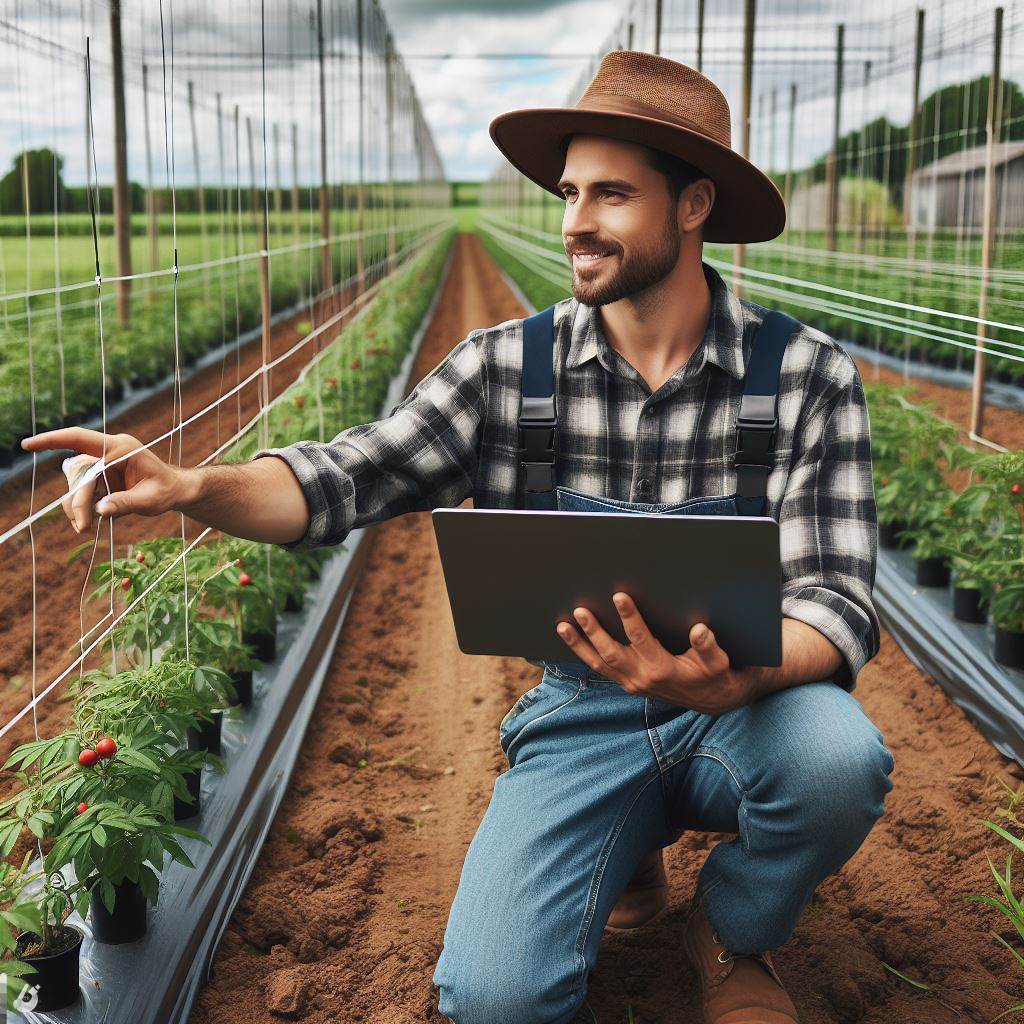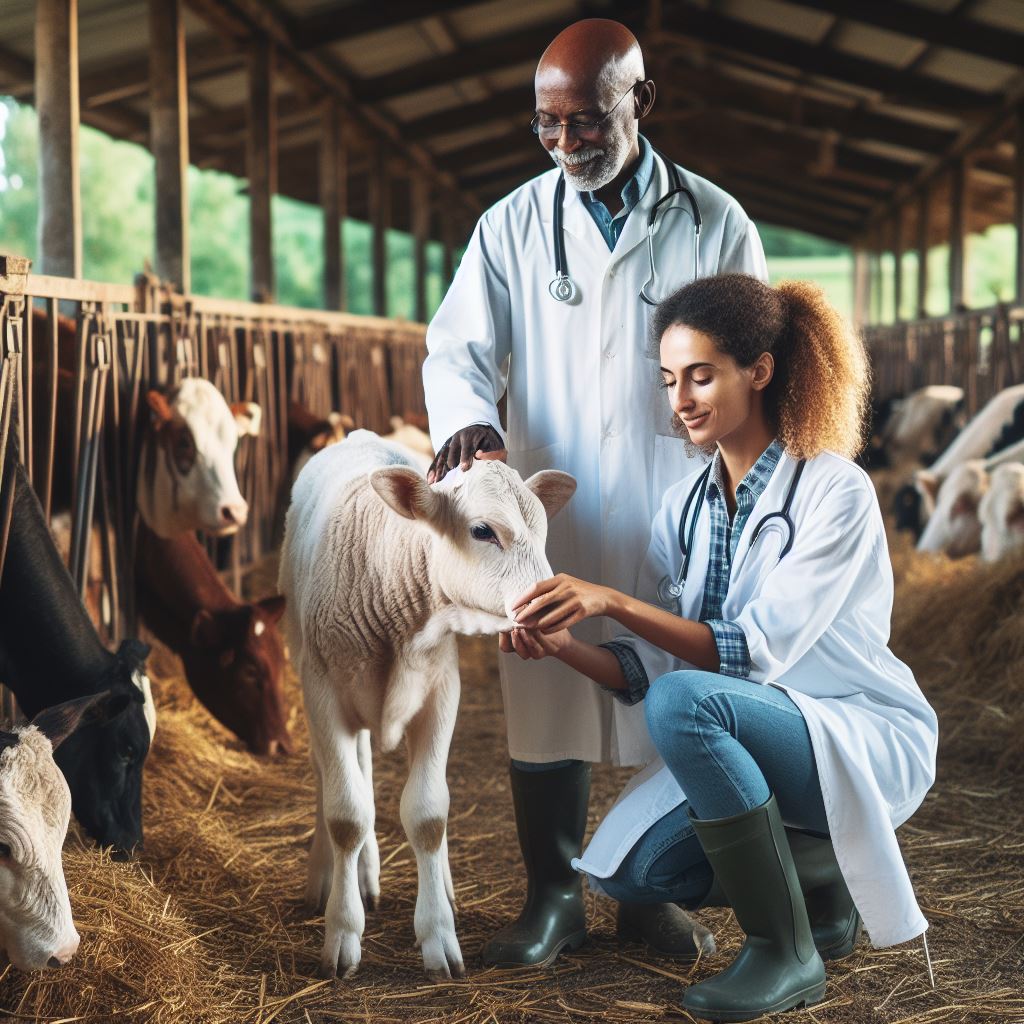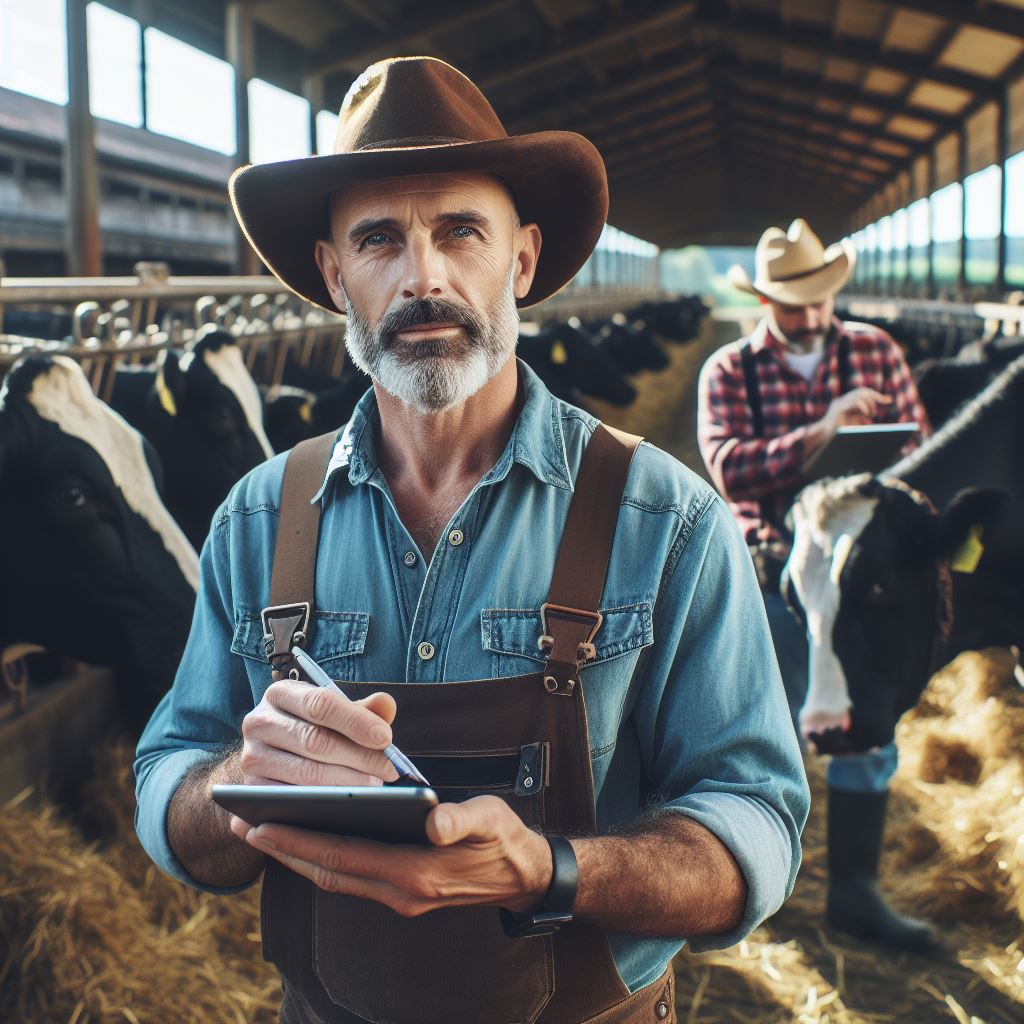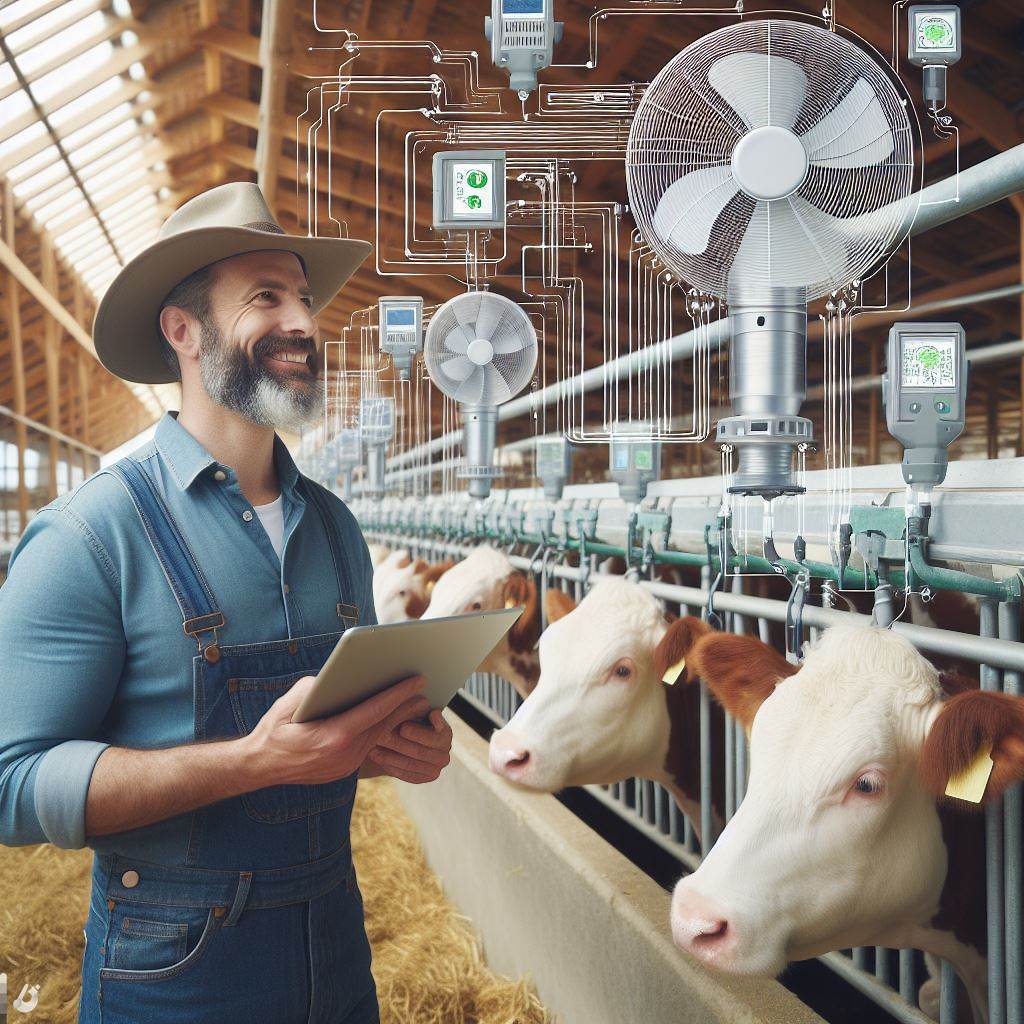Introduction
Farm bots are robotic systems that aid in various farming tasks, increasing efficiency and productivity.
These technological advancements have had a significant impact on different aspects of farming, such as planting, harvesting, and maintenance.
In this blog post, we will focus on how farm bots are revolutionizing animal feed production.
These innovative machines have transformed the way farmers can cultivate and provide nutrition to their livestock.
Gone are the days of manual labor and traditional methods for feeding animals.
With the advent of farm bots, the process of producing animal feed has become automated and streamlined.
These robots can handle tasks such as planting, growing, and harvesting animal feed crops with precision and accuracy.
This not only saves farmers time and effort but also improves the quality and quantity of feed available for their animals.
The use of farm bots in animal feed production ensures that livestock receives optimal nutrition, resulting in healthier animals.
With the ability to monitor and control the entire feed cultivation process, farmers can ensure their animals receive the right balance of nutrients.
Moreover, these bots enable farmers to cultivate animal feeds all year round, regardless of weather conditions or season.
This eliminates the dependence on external suppliers and reduces costs associated with purchasing feed from the market.
Basically, farm bots have revolutionized animal feed production, bringing efficiency, precision, and convenience to farmers.
The technological advancements in this area have transformed the way livestock is nourished, leading to healthier animals and improved farming practices.
Exciting times lie ahead as we explore further possibilities for farm bots in the agricultural landscape.
Transform Your Agribusiness
Unlock your farm's potential with expert advice tailored to your needs. Get actionable steps that drive real results.
Get StartedThe current challenges in animal feed production
Conventional methods of producing animal feed
Conventional methods of producing animal feed involve manual labor and time-consuming processes.
Traditional processes include growing crops, harvesting, and grinding them for animal consumption.
These methods have limitations such as low productivity and high labor costs.
Drawbacks of traditional processes include susceptibility to weather conditions and seasonal changes.
Inefficiencies in production can lead to inadequate supply and nutritional imbalances in animal diets.
The need for innovation in animal feed production is becoming evident
The need for innovation in animal feed production is becoming evident.
New approaches must be explored to increase efficiency and ensure a consistent supply of high-quality animal feed.
Technological advancements can address the challenges faced by traditional processes.
An innovative solution such as farm bots can revolutionize animal feed production.
With farm bots, automation can streamline the entire process, from planting to harvesting and processing.
This technology enhances precision, reduces labor costs, and increases overall productivity.
By optimizing the production process, farm bots can ensure a sufficient supply of nutritious feed.
Read: Agri Robots: The Field’s New Friends
The role of farm bots in revolutionizing animal feed
Concept of farm bots and their capabilities
Farm bots are advanced robotic machines that are capable of performing various tasks on farms.
These bots include unmanned aerial vehicles (UAVs), autonomous tractors, and robotic milkers.
They have the ability to optimize animal feed production through precision farming techniques.
How farm bots can optimize animal feed production
Farm bots can collect and analyze real-time data on soil composition, crop growth, and animal health.
By monitoring these factors, they can determine the exact nutritional requirements of the animals.
This ensures that the animal feed is tailored to meet the specific needs of each species.
Furthermore, farm bots can automate the process of planting, harvesting, and processing animal feed crops.
They can precisely sow seeds, apply fertilizers, and control pests, leading to higher crop yields.
How they can enhance the efficiency and productivity of farms
The efficiency and productivity of farms can be greatly enhanced by the implementation of farm bots.
Instead of relying solely on manual labor, farmers can utilize these advanced machines to streamline operations.
For example, autonomous tractors can plow and cultivate fields, reducing the time and effort required by human labor.
Showcase Your Farming Business
Publish your professional farming services profile on our blog for a one-time fee of $200 and reach a dedicated audience of farmers and agribusiness owners.
Publish Your ProfileThis allows farmers to focus on other essential tasks, ultimately increasing overall farm productivity.
Farm bots can also minimize waste and ensure optimal utilization of resources.
By precisely monitoring and adjusting the amount of animal feed given to each animal, wastage can be minimized.
Furthermore, farm bots can detect and address any nutrient deficiencies or health issues in real-time.
This proactive approach helps prevent disease outbreaks and improves the overall well-being of the animals.
Additionally, farm bots can contribute to the sustainable management of animal feed production.
They can employ precision application techniques, reducing the use of fertilizers and pesticides.
This not only minimizes environmental impact but also saves costs for the farmers in the long run.
In conclusion, farm bots play a crucial role in revolutionizing animal feed production.
They have the capability to optimize crop growth, enhance farm efficiency, and ensure animal well-being.
By harnessing the power of technology, farmers can improve their productivity and sustainability.
Read: Agri Robots: Revolutionizing Precision Agriculture
Automation and precision in animal feed production
Automation has revolutionized various industries, and animal feed production is no exception.
With the introduction of farm bots, the process of creating animal feed has become more efficient and precise.
These automated machines carry out tasks that were once done manually, resulting in several benefits for farmers and livestock alike.
Automation in feed production
- Farm bots have simplified the feed production process by handling tasks such as ingredient mixing.
- These bots can autonomously measure and add ingredients according to pre-defined formulas.
- By automating these tasks, farm bots save farmers significant time and effort.
- This streamlined process ensures that feed production can meet demand more effectively.
Achieving precise measurements and formulations
- One of the significant advantages of using farm bots in feed production is the precision they offer.
- These machines have the ability to measure ingredients with extreme accuracy.
- By following meticulously defined formulations, farm bots ensure consistent quality in every batch of animal feed.
- This precision also leads to optimal nutritional balance for livestock, enhancing their overall health.
Benefits of accurate and consistent animal feed
- Animal feed that is accurately formulated and consistent in composition plays a crucial role in livestock development.
- With precise measurements, farm bots help avoid overfeeding or underfeeding animals.
- Consistency in the composition of animal feed prevents any abrupt changes that could result in digestive issues for the livestock.
- Feeding animals with highly accurate and consistent feed promotes better growth, weight gain, and overall productivity.
The automation and precision provided by farm bots ensure farmers can produce animal feed efficiently while meeting the nutritional requirements of their livestock.
The benefits of using farm bots extend beyond ease of production.
Livestock farmers can now rest assured that their animals are receiving the right balance of nutrients throughout their growth.
This technological advancement in feed production helps optimize farmers’ time and resources, allowing them to focus on other critical aspects of animal care.
It also reduces the risk of human error, ensuring that animal feed remains consistent in quality.
In general, the integration of farm bots into animal feed production brings automation and precision to the process.
By automating tasks and achieving precise measurements, these machines revolutionize feed production for the benefit of both farmers and livestock.
With accurate and consistent animal feed, farmers can maximize the growth, health, and productivity of their livestock.
Read: Agri Robots: The Future of Farming Now
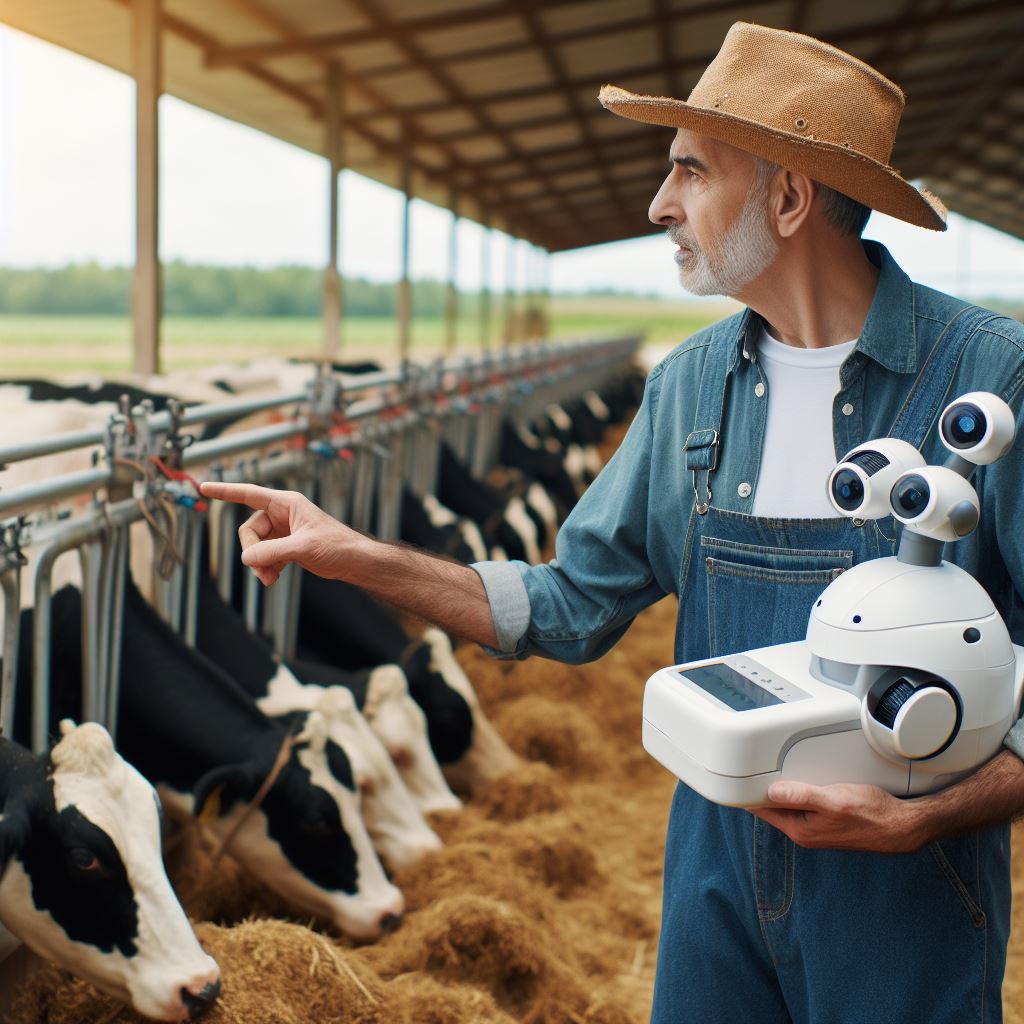
Environmental and sustainability benefits
How farm bots contribute to sustainable farming practices
Farm bots contribute to sustainable farming practices by automating crucial tasks and reducing reliance on harmful chemicals.
Through their precise feeding capabilities, farm bots help in reducing waste and optimizing resource management.
By implementing precision feeding, animal welfare is promoted as the nutrients are provided in the exact quantities needed by each animal.
This implementation of precision feeding also has a significant impact on reducing the environmental footprint of animal farming.
Farm bots utilize advanced technology to monitor and control feed quantities, minimizing overfeeding and waste.
Automatic monitoring of feed consumption allows for timely adjustments, preventing excessive use of resources.
The reduction in waste not only benefits the environment but also contributes to cost savings for farmers.
How precision feeding promotes animal welfare and reduces environmental impact
With precision feeding, the overall efficiency of nutrient utilization in animal farming is improved.
By analyzing data collected by farm bots, farmers can identify potential inefficiencies and make necessary adjustments.
Farm bots can also help in identifying and addressing any imbalances in feed formulation and nutrient requirements.
Efficient resource management leads to a decreased reliance on natural resources and lower greenhouse gas emissions.
With farm bots, farmers can better predict animal feed requirements, avoiding overproduction and unnecessary waste.
Another environmental benefit of farm bots is the reduction in water usage through precise irrigation systems.
By automating irrigation, farmers can ensure that water is used optimally, minimizing water wastage.
Water preservation is essential for sustainable farming, and farm bots play a crucial role in achieving this goal.
Additionally, farm bots can assist in the implementation of precision application of fertilizers and pesticides.
Showcase Your Farming Business
Publish your professional farming services profile on our blog for a one-time fee of $200 and reach a dedicated audience of farmers and agribusiness owners.
Publish Your ProfileThis targeted approach helps in minimizing the use of agrochemicals, reducing pollution and ecosystem damage.
Optimized pesticide usage also helps in preserving the natural habitats and biodiversity in and around farms.
Farm bots, with their ability to collect and analyze real-time environmental data, enable proactive decision-making to enhance sustainability.
Accurate monitoring of soil health and nutrient levels allows farmers to apply fertilizers judiciously, preventing nutrient runoff.
Overall, the use of farm bots in animal feed production and farm management offers a significant step towards sustainable agriculture.
Read: Robotic Milkers: A Dairy Farm Evolution
The future of animal feed with farm bots
Potential advancements and future applications
- Farm bots have the potential to revolutionize animal feed production in numerous ways.
- Advancements in technology can lead to improved efficiency and cost-effectiveness in feed production.
- Future applications of farm bots may include autonomous harvesting and processing of animal feed.
Continuous research and development in the field
- Continuous research and development in the field are striving to improve the capabilities and functionalities of these bots.
- With ongoing progress, farm bots will become more proficient in identifying and providing the specific nutritional needs of animals.
- Furthermore, they can help optimize the feed formulation process, resulting in healthier and more balanced diets.
Potential economic impact of farm bots in animal feed production
The economic impact of farm bots in animal feed production is expected to be significant.
These bots can lower labor costs by replacing manual tasks with automated and precise operations.
Additionally, the reduced reliance on human labor can minimize the risk of workforce shortages and associated production disruptions.
The improved efficiency and accuracy of farm bots can lead to higher feed output, meeting the growing demand for animal feed.
This increased productivity can potentially lower the overall cost of animal products for consumers.
Furthermore, farm bots can contribute to sustainable agriculture by reducing waste and minimizing the ecological footprint of feed production.
They can optimize the use of resources such as water, energy, and raw materials, resulting in a more environmentally friendly process.
In the future, farm bots may also play a role in ensuring food security by enhancing the availability of quality animal feed.
By consistently monitoring and managing the feed production process, these bots can minimize the risk of shortages or fluctuations in supply.
Moreover, farm bots can enable precise control over the composition of animal feed, ensuring optimal growth and health outcomes for livestock.
The integration of artificial intelligence and machine learning technologies in farm bots holds great potential.
These capabilities can allow the bots to adapt and learn from data, leading to further advancements in feed production and animal nutrition.
The development of smart sensors and IoT (Internet of Things) connectivity can enhance the functionality and effectiveness of farm bots.
Real-time data collection and analysis enable farmers to make informed decisions and optimize their livestock management strategies.
In essence, farm bots are set to revolutionize the future of animal feed production.
With continuous research and development, advancements and applications in this field are bound to expand.
These bots have the potential to significantly impact the economy, environment, and overall quality of animal feed.
By embracing the possibilities offered by farm bots, the agricultural industry can move towards a more efficient and sustainable future.
Conclusion
Farm bots have the potential to revolutionize animal feed production in several key ways.
Firstly, they can automate the process of feeding animals, reducing the labor and time required.
Secondly, farm bots can ensure that animals receive the correct amount and type of feed, resulting in improved nutrition and health.
Additionally, they can monitor feed consumption patterns and alert farmers to any potential issues or changes in animal behavior.
This can ultimately lead to more efficient feed usage and reduced waste.
Furthermore, the introduction of farm bots in animal agriculture has the potential to create a more sustainable and environmentally friendly future.
By accurately measuring and providing the necessary feed quantities, farm bots can minimize the overuse of resources, such as water and feed, reducing the ecological impact of intensive farming practices.
The automation and precision offered by farm bots can also contribute to a decrease in greenhouse gas emissions and overall carbon footprint.
As the demand for food continues to rise, it is crucial to explore innovative solutions that can optimize the efficiency of farming practices.
Farm bots present an exciting opportunity to meet these challenges head-on.
By embracing this technology, farmers can not only improve the welfare of their animals but also increase productivity and profitability.
In a nutshell, the potential of farm bots in revolutionizing animal feed production is vast.
They offer the promise of a more sustainable and efficient future in farming.
To fully realize these benefits, it is essential for farmers and stakeholders to further explore and invest in farm bot technologies.
By doing so, we can ensure a brighter and more successful future for both animals and the agricultural industry.

